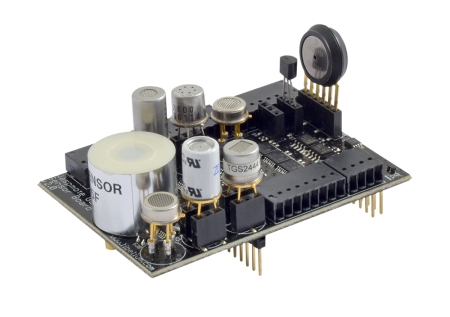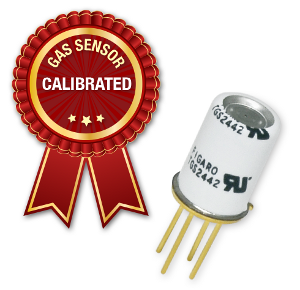Libelium launches a new line of Calibrated Gas Sensors in order to offer accurate readings of the gas sensors present in both our Waspmote and Plug & Sense! lines. This new line is born as a necessity of some clients who needed to get maximum accuracy in their industrial, environmental, agriculture and farming applications.
Some of the applications which were improved by adding calibrated sensors are:
Environmental:
- Forest Fire Detection: minimum amounts of CO (30 ppm’s) need to be measured in order to detect combustion
- Air Pollution: strict regulations make important the control of gases such as: SH2, Methane (CH4), CO, air pollutants
Agriculture:
- Wine Production: toxic levels of CO
- Green Houses: O2, CH4
Farming:
- Offspring Care: SH2, Methane (CH4), NH3
- Toxic Gas Levels (waste): SH2, Methane (CH4), NH3
Industrial:
- Indoor Air Quality: O2, NH3, CO
- Explosive and Hazardous Gases: O2, H2, Liquefied Petroleum (Isobutane, Ethanol)
- Storage Incompatibility Detection: SH2, CH4, Liquefied Petroleum (Isobutane, Ethanol)

Gas Sensor Board for Waspmote with Calibrated Sensors
What accuracy do we get with non-calibrated sensors?
Up to now, with the gas sensors without calibration we could get useful information in order to know the overall range of a certain gas. This means we could get two types of information:
- Presence / Absence of a gas: useful for detection
- Average levels: low / medium / high
They are useful for applications where knowing the relative levels is enough and that the price is key point (as the non-calibrated gas sensors are cheaper than the calibrated ones). Take into account that air quality projects such as Nest Smoke Alarm, the Air Quality Egg, or Smart Citizen work with non-calibrated sensors, in the same way that Waspmote and Plug & Sense! made up to date. This shows how knowing the relative values and the presence / absence of a gas is enough for many applications.
What accuracy do we get with calibrated sensors?
| Sensor | Range | Accuracy |
| Air Pollutants I
(C4H10, CH3, CH2OH, H2, CO, CH4) |
1~30ppm | ±4ppm |
| Air Pollutants II
(C6H5CH3, H2S, CH3CH2OH,NH3, H2) |
1~100ppm | ±4ppm |
| Alcohol Derivatives
(CH3CH2OH, H2, C4H10, CO,CH4) |
50~5000ppm | ±10ppm |
| Methane (CH4) | 500~10000ppm | ±100ppm |
| Oxygen (O2) | 0-30% | ±1%ppm |
| Carbon Monoxide (CO) | 30~1000ppm | ±4ppm |
| Ammonia (NH3) | 10~100ppm | ±3ppm |
| Liquefied Petroleum Gases
(H2, CH4, Ethanol, Isobutene) |
500~10000ppm | ±200ppm |
Why are some gas sensors that are not included in the calibrated list?
There are some sensors such as CO2, NO2, VOC, O3 that haven’t been included in the calibration process as the internal operation of these sensors do not allow to set reference points in the vacuum chamber. This means we can keep using these sensors to measure relative changes but not specific ppm’s measurements. Anyway these sensors are extremely useful to measure the overall kind of concentration (LOW, MEDIUM, HIGH) of each gas and detecting its presence in a certain place to control specific events.

Plug & Sense! Environmental Model with Calibrated Sensors
These sensors are calibrated in the laboratory using a vacuum chamber and adding small quantities of the gas in order to create an specific response curve for each sensor. When purchasing a calibrated sensor a calibration certificate is included, indicating the conditions of the calibration and the output of the sensor for the three calibration points. From this data we can obtain the concentration value in ppm’s (which is the final value we want to measure).

For more information about the new line of Calibrated Gas Sensors contact our Commercial Team.